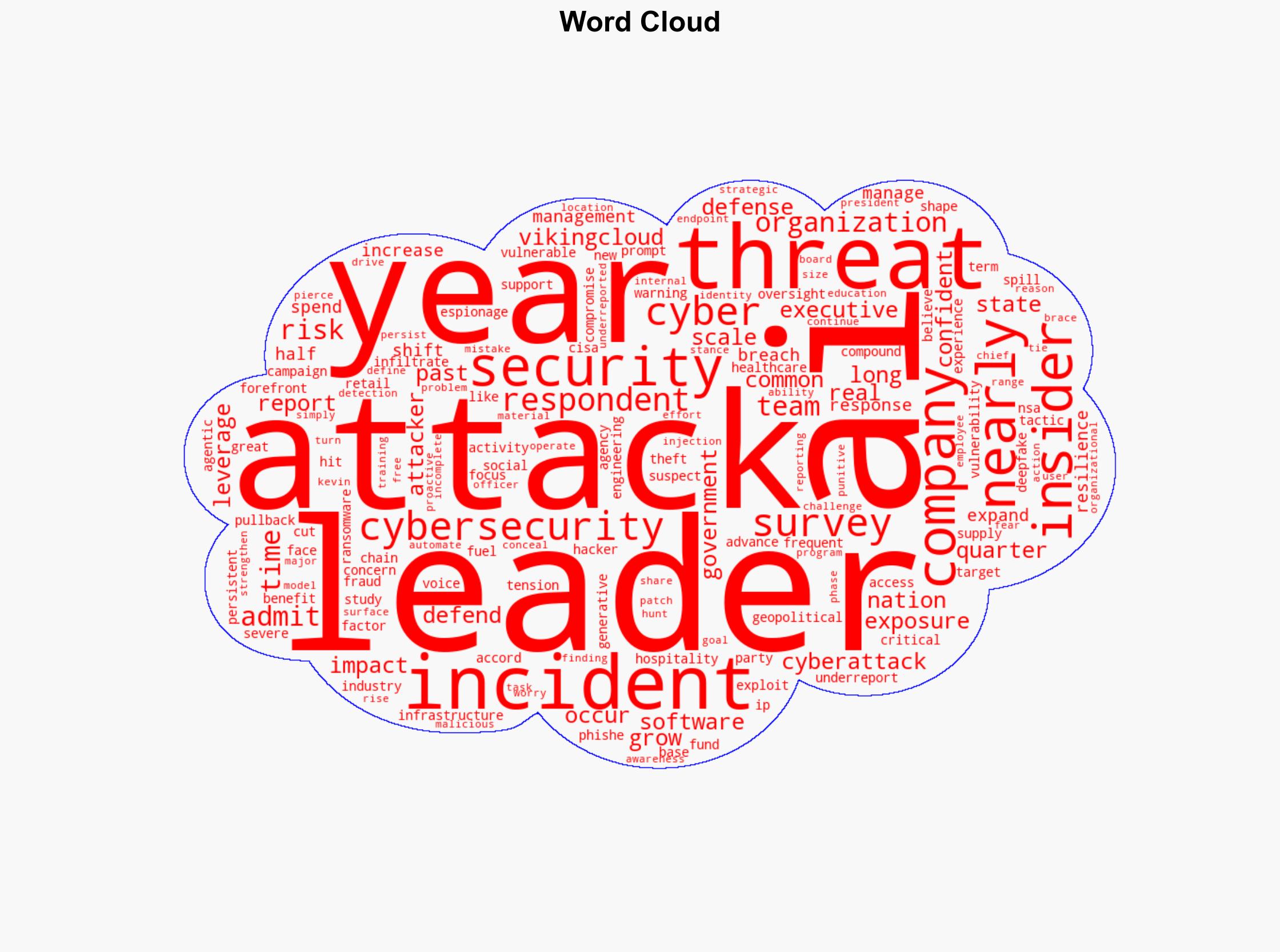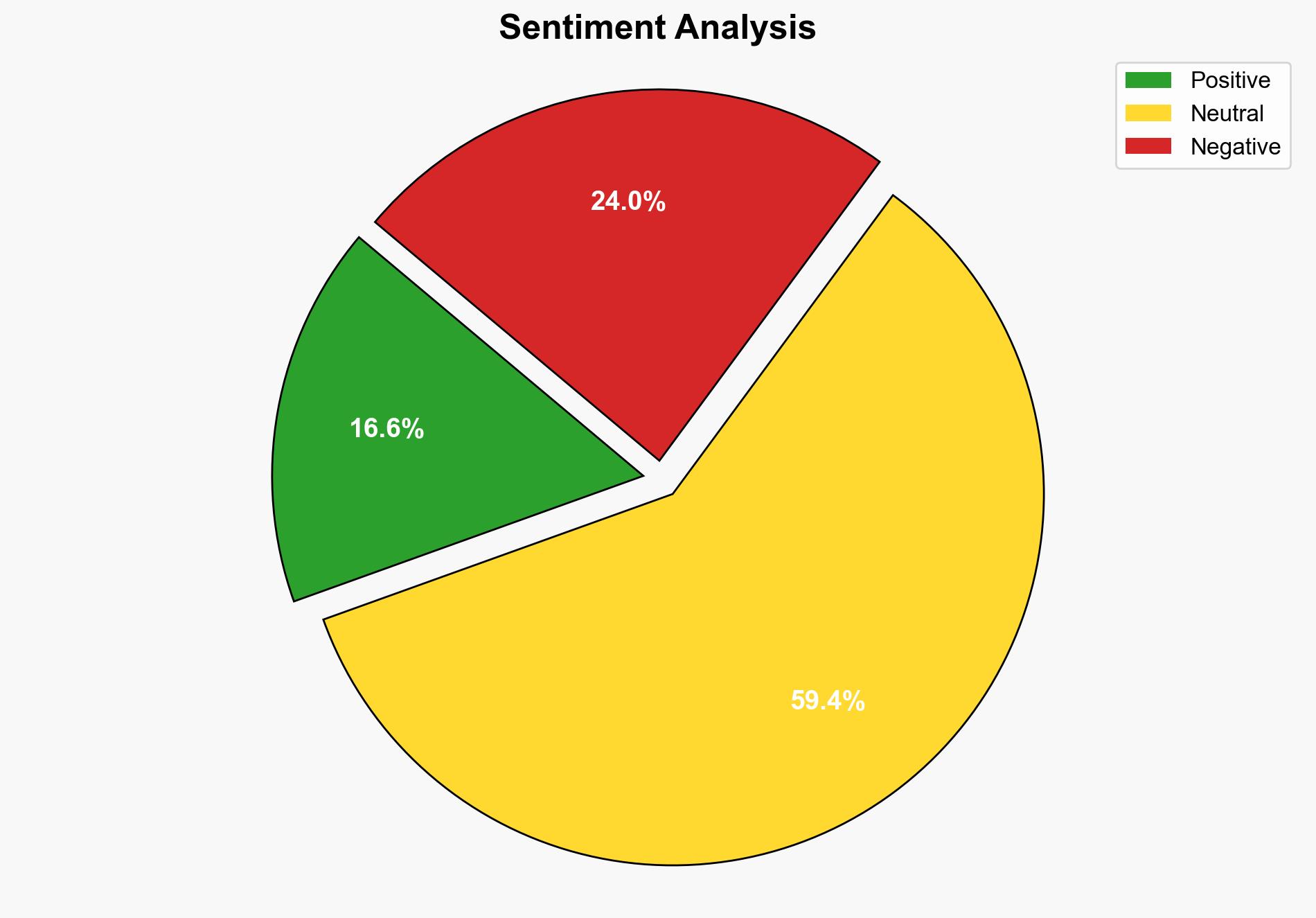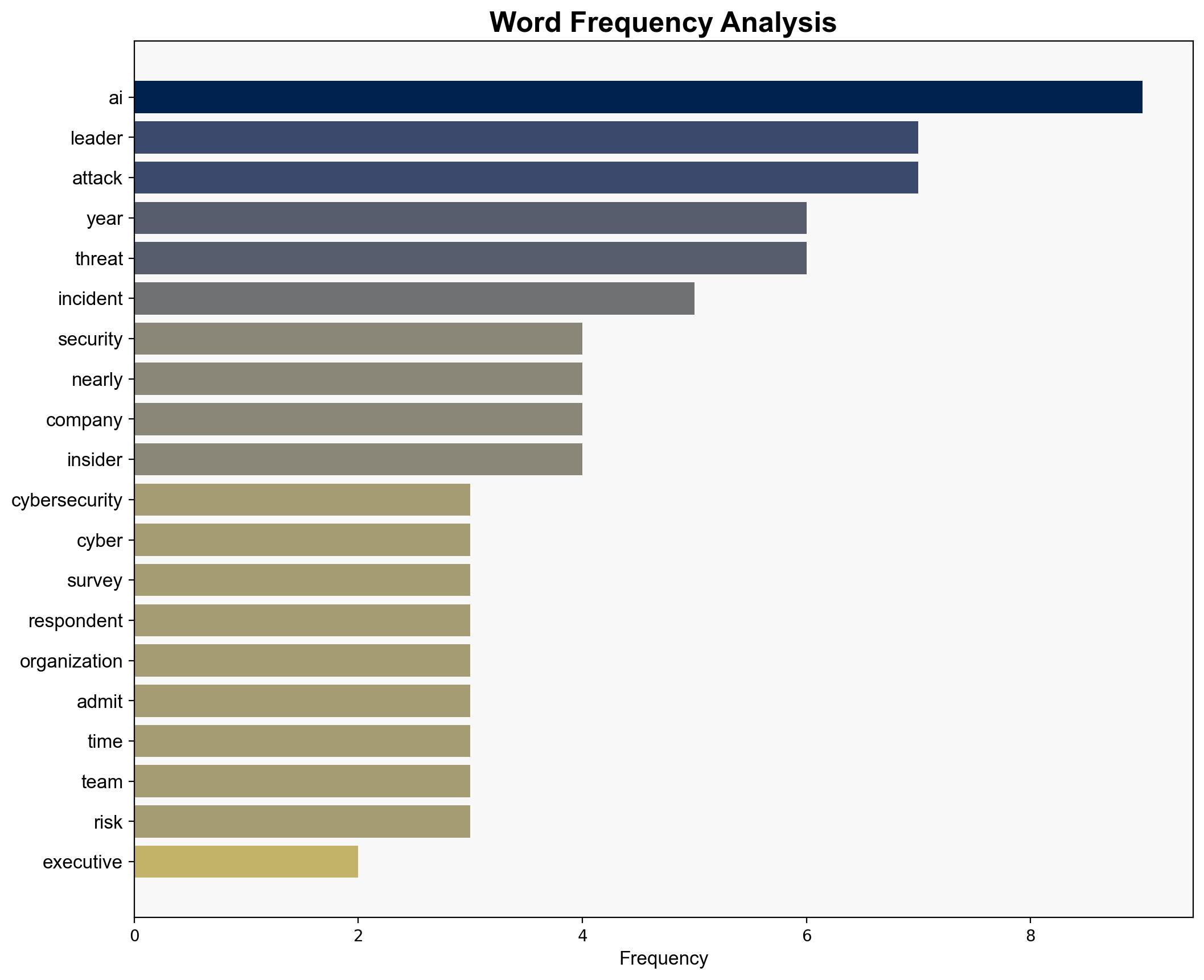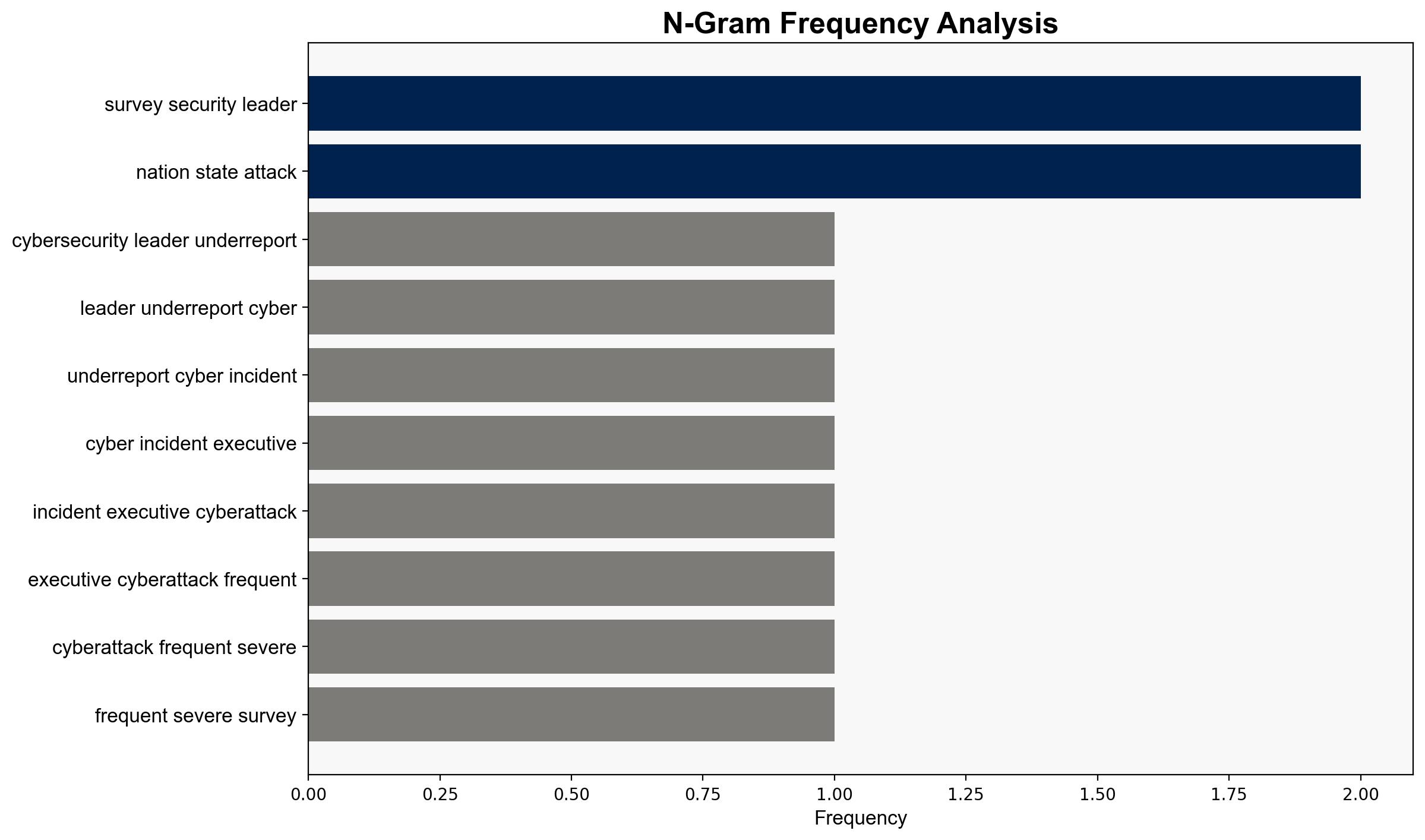Cybersecurity leaders underreport cyber incidents to executives – Help Net Security
Published on: 2025-09-29
Intelligence Report: Cybersecurity leaders underreport cyber incidents to executives – Help Net Security
1. BLUF (Bottom Line Up Front)
Cybersecurity leaders are underreporting incidents to executives, potentially creating a false sense of security and resilience within organizations. The most supported hypothesis is that fear of punitive measures and reputational damage drives this underreporting. Confidence level: Moderate. Recommended action: Implement policies that encourage transparent reporting without punitive repercussions, and enhance executive awareness of cyber threats.
2. Competing Hypotheses
1. **Hypothesis A**: Cybersecurity leaders underreport incidents primarily due to fear of punitive responses and reputational damage.
2. **Hypothesis B**: Underreporting is driven by a lack of confidence in the ability to defend against AI-driven threats, leading to selective reporting to avoid highlighting vulnerabilities.
Using ACH 2.0, Hypothesis A is better supported by the data, as the survey indicates a significant number of leaders cite fear of punitive responses and reputational damage as reasons for underreporting. Hypothesis B is less supported, as the lack of confidence in AI defense is more about preparedness than reporting behavior.
3. Key Assumptions and Red Flags
– **Assumptions**: Leaders believe that reporting incidents will lead to negative consequences. Executives lack awareness of the true cyber threat landscape.
– **Red Flags**: Potential bias in self-reported survey data. Underreporting may be more widespread than acknowledged.
– **Blind Spots**: The impact of underreporting on long-term strategic planning and resource allocation is not fully explored.
4. Implications and Strategic Risks
Underreporting can lead to inadequate resource allocation for cybersecurity, increasing vulnerability to nation-state attacks and AI-driven threats. This false sense of security may result in strategic missteps, leaving organizations unprepared for significant breaches. The geopolitical dimension is critical, as nation-state actors exploit these vulnerabilities.
5. Recommendations and Outlook
- Develop a non-punitive reporting culture to ensure accurate incident reporting.
- Enhance executive education on cyber threats to align strategic priorities with actual risks.
- Scenario Projections:
- Best: Organizations adopt transparent reporting, leading to improved defenses and resilience.
- Worst: Continued underreporting results in a major breach with severe reputational and financial consequences.
- Most Likely: Gradual improvement in reporting practices as awareness increases, but gaps remain.
6. Key Individuals and Entities
– Kevin Pierce
7. Thematic Tags
national security threats, cybersecurity, counter-terrorism, regional focus




